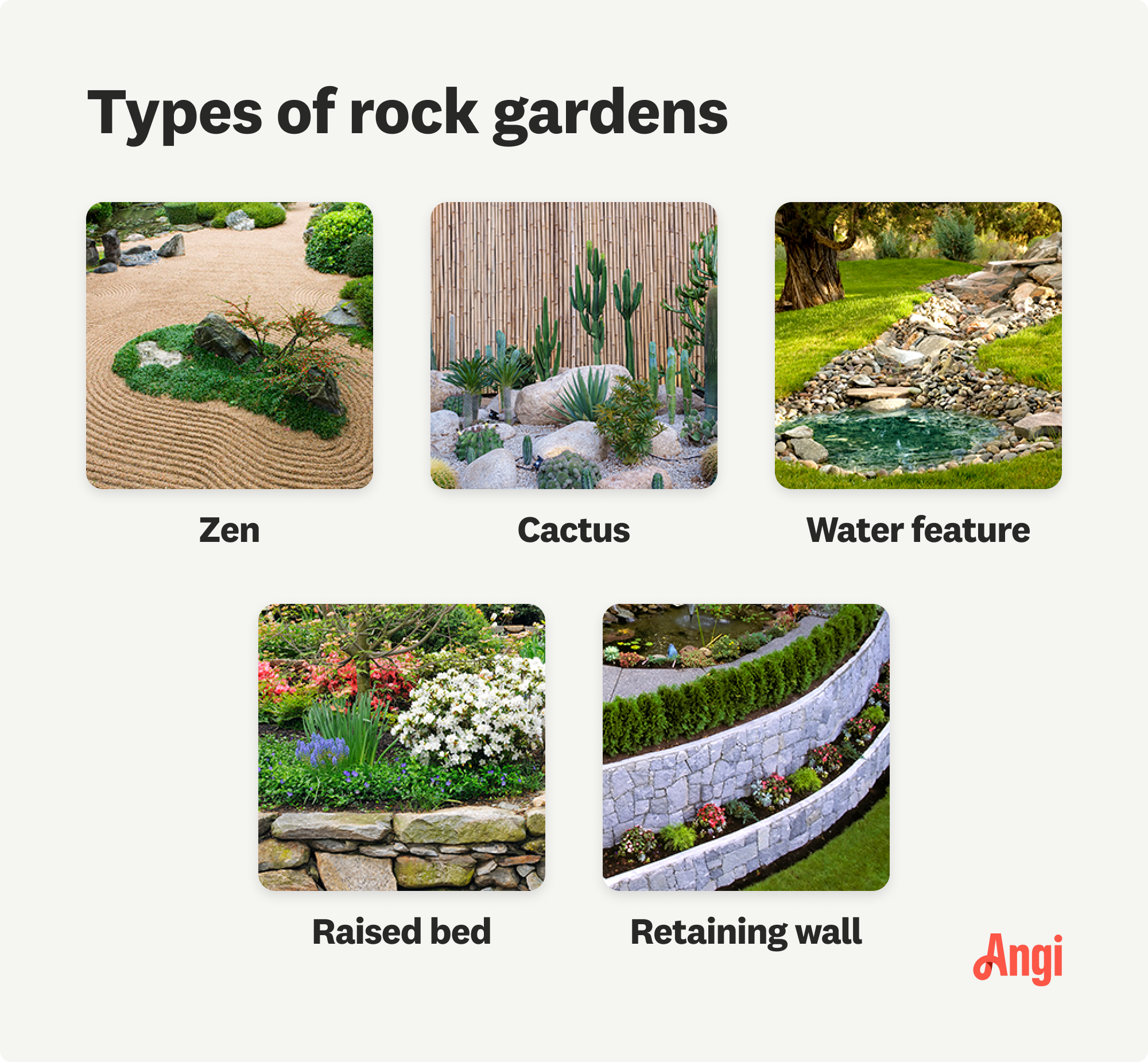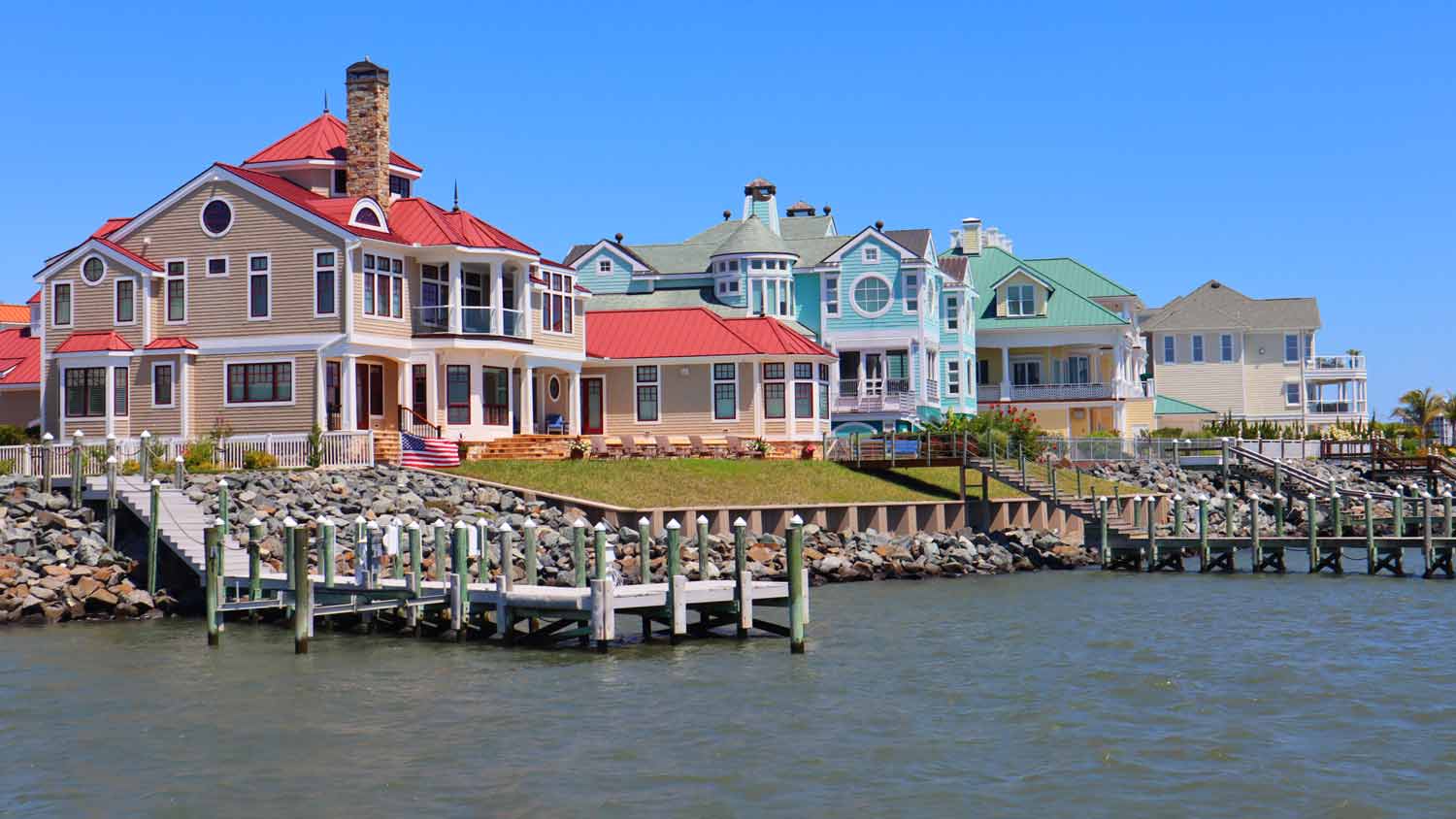
What are average sod installation prices? Learn how much sod costs based on factors like square footage, land prep, land condition, and more.
Make your garden a rock star


Rock gardens are a low-maintenance alternative to turf or flower gardens.
Rock gardens provide year-round beauty and conserve water.
You can choose from various types of rock gardens, such as Zen, water feature, boulder arrangement, or corner.
The cost of rock gardens depends on the type and quantity of rocks you choose.
From Zen rock gardens to artificial waterfalls cascading from rock walls, rock gardens can take many shapes and forms. Low maintenance, they’re ideal for arid climates and areas that are difficult to landscape. Plus, they add drama, variety, and natural beauty. Read on for the lowdown on rockeries, from their types to their pros and cons and costs.
Rock gardens, or rockeries, are intentional arrangements of rocks, including pebbles, stones, or boulders. Although they’re artificial, they’re designed to look natural. Sometimes, rock gardens include rocks only, but often, they feature plants as well.

Add structure: Rock gardens can separate different areas of a property, like setting off a raised garden bed. They can also add height and depth. Consider a rock garden in a part of your property that’s difficult to landscape, like rough terrain or a steep slope.
Versatile design: Create a rugged rock garden with rough, irregular rocks or a formal rock garden with smooth pebbles and white gravel. A mix of slabs, black pebbles, and white granite looks modern, while a combo of stepping stones and lush plantings adds charm.
Low maintenance: Rock gardens require much less maintenance than grass or flower gardens. Just don’t forget to weed, fertilize, and irrigate any plantings. Even in the middle of the winter, rock gardens provide contrast, structure, and color to gardens.
Superior to mulch: Rocks last longer than mulch. Unlike wood chips, you won’t need to replace them. Plus, rocks don’t attract ticks, termites, and other insects like mulch does.
Promote drainage and conserve water: Use river rocks to help protect your yard from water damage and wet spots. You'll also save water by installing a rock garden rather than turfgrass or plantings.
Can include pavers: Different types of pavers and installations, such as paver patios and walkways, can give gardens a variety of uses and areas.
Heavy: Large rocks can be difficult to lift and set in place. You’ll likely need to hire a local hardscape contractor for the job.
Expensive: Some rocks are quite costly. To save money, buy in bulk and consider using more economical crushed granite, river rocks, and pea gravel. Also, try Craigslist, Freecycle, and rock quarries when sourcing materials.
Temperature: Because rocks raise the temperature of the soil beneath them, it can make it difficult for the soil temperature to regulate which can cause plants to dehydrate.
Hard to clean: Leaves, other debris and weeds can easily get stuck/grow between the rocks. This is difficult to remedy without tedious handiwork and lots of spare time.
Can disrupt pH: The mineral composition of landscaping rocks can affect soil pH, which may impact both soil and plant health.

Here’s a sampling of a few of the options for rock gardens. Be sure to check building codes and apply for permits for upgrades like water features, retaining walls, and firepits or fireplaces.
Zen: These structured arrangements of smooth rocks, raked sand, and minimal plants are serene.
Cactus: Intersperse rocks and cacti in desert climates.
Water feature: Surround a waterfall or pond with large rocks and adorn it with plantings.
Border: Use rocks to create a margin around decks, patios, garden beds, and paths or walkways.
Raised bed: Stack large and small rocks, then fill with mulch before planting.
Retaining wall: On a slope, erect a stone retaining wall. Retaining wall costs vary, so you’ll want to research options and structural requirements before starting.
Boulder: Arrange these large rocks to create a focal point.
Steps: Use rustic natural stones or rectangular slabs.
Path or walkway: Opt for rectangular slabs or line a pathway with river rocks, lava rocks, crushed pea gravel, or crushed granite.
Fire pit or fireplace: DIY a firepit by stacking large rocks on the bottom, filling in empty spaces with small rocks, and lining with heat-resistant stones like lava rocks. Use stone and concrete to create an outdoor fireplace.
Dry creek bed: For a wet area, dig a trench, fill it with river rocks, and line it with large rocks.
Corner or nook: Create a small rockery in a corner or awkward area. Try lining it with large rocks and placing soil and plants in the middle, or consider professional landscape curbing to give your rock garden a polished look.
The price of the rock garden for your landscape will depend on the type and quantity of rocks you choose. Here’s an idea of what you’ll spend per material—and don’t forget about the cost of delivery.
| Rock Type | Average Delivery Cost |
|---|---|
| Boulders | $50–$400 each |
| Pea rocks | $5 per mile traveled |
| River rocks | $200–$600 |
| Gravel | $5 per mile traveled |
When carefully planned and planted, rock gardens look like they just happened to sprout up where they are. Here are a few rock garden ideas and tips for designing your own.
Decide on your budget, where and how big your garden will be, what plants you’ll put in it, and what other features it will have. You might do the whole project in one big push or start with a small area and expand over time. Identify the tools needed to move stones, haul soil, and plant greenery.
If your yard needs other work, do that before you start your rock garden. For example, if your yard is uneven or needs better drainage, research who to hire to regrade yards, or if you’re not sure you can handle the project yourself, learn how to hire a landscaper and interview some landscaping pros near you.
Just like vegetable and flower gardens, rock gardens need the right soil to thrive. Even if you’ve chosen native plants, you may need to amend your soil to get the right combination of organic matter, nutrients, and texture. Start with a soil test—you can order one online or through your state’s agriculture extension service. Once you know what’s in your soil, you’ll know what else to add, including compost, gravel, sand, and mulch.
You can get soil amendments, sand, gravel, and rock from garden centers or rockeries. You can also order bulk deliveries from local sand and rock delivery services near you.
Now comes the fun part. The biggest rocks should form the base of your rock garden. You may need to use a dolly, hand truck, or larger machinery for very large rocks; once they’re in place, you can add smaller rocks and stones in a way that looks natural and unplanned. You may choose rocks that look similar to keep a unified look or use a variety of landscaping rock types to add visual interest.
Ask your local landscape designer what they recommend, but consider these pointers:
Try river rocks for borders and to promote drainage in wet areas.
Cover large areas with pea gravel
Add height or create dramatic displays with boulders.
For pathways and short walls, consider flagstones.
Rock gardens need plants to add that lush, living component. You can find a variety of plants at local garden centers, specialty nurseries, and online sources. Choose plants that fit your climate and garden soil, and look for a range of sizes, colors, and textures to add visual interest. Most experts recommend alpine plants because they are used to surviving in harsh conditions, including rocky areas, low-moisture soil, full sun and full shade, and fluctuating temperatures.
When planting, carefully remove peat moss or organic material from the roots so the plants can latch onto the soil in your garden. Dig a hole twice the size of the roots, and be sure to keep the roots straight. Line up the exposed part of the stem with the ground's surface so that you don’t bury it too deeply. Then, carefully replace the dirt in the hole, pat it down firmly, and surround the plant base with gravel so water won’t pool near the plant.
Alpine and other drought-tolerant plants thrive in sandy soil with good drainage.
For a rock garden in full sun, try sedums, succulents, lavender, ornamental grasses, narcissus, alliums, creeping thyme and phlox, and dwarf conifers.
Think about hostas, ferns, or moss if your rock garden is in the shade.
Control weeds by placing a weed barrier under plantings.
From average costs to expert advice, get all the answers you need to get your job done.

What are average sod installation prices? Learn how much sod costs based on factors like square footage, land prep, land condition, and more.

Leveling your yard can help with drainage and prevent damage to your home. Learn the cost to level a yard in Columbus, OH, and what factors can affect the price.

Growing plants with a hydroponic gardening water system can be a big investment. To know how much it costs to build a hydroponic garden, consider the system, technology, size, and whether you hire a pro. This guide will help calculate costs.

There are reasons to grade or slope your yard beyond aesthetics—drainage is the main one. Read on and learn how to have an informed discussion with your pro.

While it’s possible to DIY build a retaining wall, several pros have advanced knowledge of hardscaping and building. Learn who to hire to build a retaining wall.

If you’re trying to prevent erosion in your yard, riprap might be the right material for your project. So, what is riprap, exactly? Let’s walk through it.